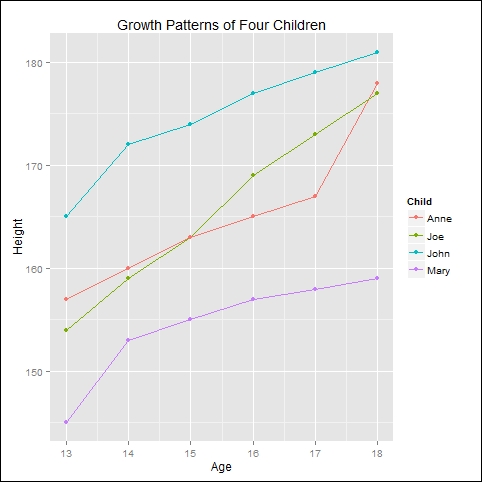Now let's learn how to create several curves in one graph, provided that the data is arranged correctly. Read the Children dataset from the code file of this chapter. It gives the heights and ages of four children. We want to produce a graph of Height against Age for each child, including both points and lines. Enter the following command:
attach(cheight)
Let's see the first eight rows of this dataset:
head(cheight, 8)
We get the following output:
Child Age Height 1 John 13 165 2 John 14 172 3 John 15 174 4 John 16 177 5 John 17 179 6 John 18 181 7 Mary 13 145 8 Mary 14 153
Note that the data is arranged in columns so that several measurements for each child appear in a single column. This format is ideal for creating multiple curves simultaneously. Before we start, let's remind ourselves of the names of each child. Since Child is a categorical variable, we can see each name using the levels() command:
levels(Child)
Their names are:
[1] "Anne" "Joe" "John" "Mary"
Let's plot all curves together in the same graph, mapping color to Child with the following command:
qplot(Age, Height, data = cheight, geom = c("line","point"), color = Child, main = "Growth Patterns of Four Children")
We get the following graph:

We now have a colored curve and colored points for each child.